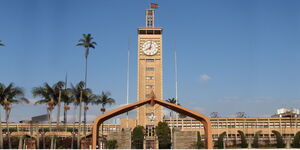Kenya is among four countries in Africa staring at high rice prices after India on Sunday introduced a Minimum Export Price (MEP).
The Indian government set the limit at Ksh171,000 (USD 1,200) per ton minimum export price to clamp down on traders who were exporting ordinary rice labelled as Basmati, a premium variety.
Explaining the reason behind its decision, India stated that after banning the export of non-basmati white rice in July this year, some traders started packaging their rice as Basmati to circumvent the restriction.
“The MEP will help authorities ensure that non-Basmati rice is not exported as Basmati rice,” India explained its rationale.
Kenya and other countries that benefit from Indian imported rice started recording price increases after the Asian country banned all non-Basmati varieties, which account for 80 per cent of its total rice shipments.
Due to its high prices, the premium, aromatic Basmati rice only accounts for 20 per cent of its exports, with the majority of the variety being sold to Iran, Iraq, Yemen, Saudi Arabia, the United Arab Emirates, and the United States.
On the other hand, the banned non-Basmati variety was popular in Asian nations and select African nations including Madagascar, Benin, Kenya and Ivory Coast.
Developing nations were being exposed to consumer exploitation as non-premium rice would be labelled as Basmat but distributed as ordinary rice once it hit the market.
The new move may prompt Kenyans to dig deeper into their pocket to purchase imported rice. To ensure that traders would not export cheap parboiled rice - rice partially boiled with husk - which is not on the banned list, India slapped a 20 per cent export duty on the variety.
Kenya imports 255,000 metric tonnes per year from India, and to cover the deficit brought by the ban, Kenya will rely heavily on Pakistan and Tanzania. Kenya also imports rice from other countries, albeit in low quantities, including Thailand and South Korea.
According to the Observatory of Economic Complexity, rice is Kenya's 12th most imported product. The Kenya Bureau of Statistics (KNBS) adds that Kenyan imports about 30 per cent of locally consumed rice from India, making it the second largest source of the grain.
Kenya further does value addition to rice and exports the produce to Oman, Tanzania and the United States.
Nonetheless, the East African Community (EAC), in June this year, granted Kenya the authority to lower import duties on rice and wheat. These reduced rates fall below the bloc's established common external tariff, aiming to alleviate the challenge of soaring food prices in Kenya.
According to EAC, rice imported outside the region will be subject to a custom duty of only 35 per cent, rather than the 75 per cent charged under the EAC common tariff. Wheat will be charged 10 per cent rather than 35 per cent.
Unlawful Rice Imports
Despite the policies put in place to regulate rice imports, Kenya is still grappling with the influx of contaminated rice.
In August 2023, an exposé by NTV alleged that government authorities colluded with traders who were accused of importing contaminated rice worth Ksh150,000 and released the product to the public.
The 10,000 bags of rice were reportedly packaged as a popular brand and estimated to be worth Ksh150 million. The company, locally legally authorised to produce the brand, raised the alarm after a tip-off.
However, the Anti-Counterfeit Authority (ACA) refuted the allegations, arguing that the importation was approved by reputable government agencies based on scientific tests as fit for human consumption within their respective statutory mandates.












